Contact person: Cedric PorsielProject description:
Some special type of semiconductor nanoparticles show the property to emit monochrome light by optical or electrical excitation with high efficiency, which is the reason why they are also called quantum dots. Quantum dots are used more and more as dyes or optical markers in biological cells, as defined donor-acceptor systems in solar cells, in computer technology (e.g. for transistors), as light-emitting diodes or, as the most prominent example, in modern LED-backlit LCD televisions to increase the color range and contrast. For each implementation, however, clearly defined material properties are required, which makes precise pre-characterization of each sample unavoidable.
For fast and uncomplicated initial analysis, the optical properties can be examined by absorption spectroscopy, because the semiconductor-specific band gap or the energetic distance of the valence and conduction band represents the lowest energy transition in the system and is visualized as the clear first absorption maximum in the spectrum. For very small particles (usually < 10 nm), the effect of quantum confinement increases with decreasing size, leading to a widening of the band gap. An empirical correlation with transmission electron microscopy (TEM) was established for a quantitative statement about the particle size. This correlation is quite stable in itself, but contains method-specific uncertainties. Within absorption spectroscopy, only the band gap energy and its signal width are read. It is neglected here that the consideration of the visibility of further energy transitions can be used for the sample quality and that the signal width describes only conditionally the degree of polydispersity due to a volume-dependent weighting. This project deals with the establishment of small angle X-ray scattering (SAXS) as a more time-efficient but in terms of accuracy equivalent method to TEM. SAXS is able to measure the sample without large preparation in an ensemble in an actual application environment. The basis is based on the self-made synthesis of a selected semiconductor system and the re-evaluation of the previously used model functions. The aim is to establish an adapted method correlation and a statement about the accuracy of the quickly accessible absorption spectroscopy under metrological criteria. In addition, the standardizability of the system used is to be tested, since calibration standards < 10 nm are rare and there is a high demand for them. For a better comparability, the semiconductor system was chosen for the well-researched cadmium selenide (CdSe), which is very appealing due to its special energetic course through the entire visible light spectrum (see Fig. 1) and is therefore used in many areas. The synthesis was carried out with individual adjustments according to the established hot injection method [1]. The growth kinetics can be adjusted via temperature and stabilizer concentration for the desired particle size range and fractions can be easily removed over time as desired.
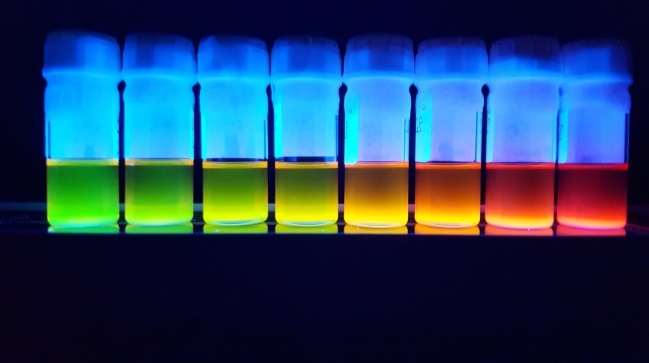
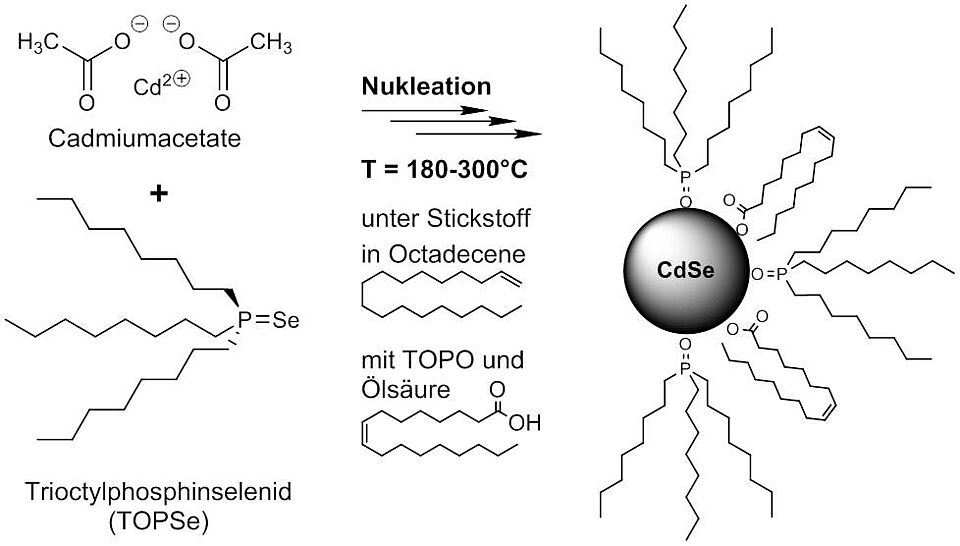
Figure 1: Cellular uptake of nanoparticulate based tumor therapeutics and their ejection from the cell (A), or the overcoming of this by the use of a multi-component system, which results in apoptotic cell death by inactivation of the ribosomes. The carrier system is superparamagnetic iron oxide nanoparticles (SPION).
The information required for the correlation is directly accessible from the absorption spectra and the TEM images. This is not the case with SAXS because the information from the X-rays scattered by the particle is in reciprocal space. Only through an indirect Fourier transformation can the scattering curve be translated into real space as a pair distance function. With the further assumption that the system consists mainly of spherical particles, a volume-dependent size distribution function can be applied. This is of central importance in comparison with TEM, since the disproportionate volume dependence of the signal strength shifts the weighting.
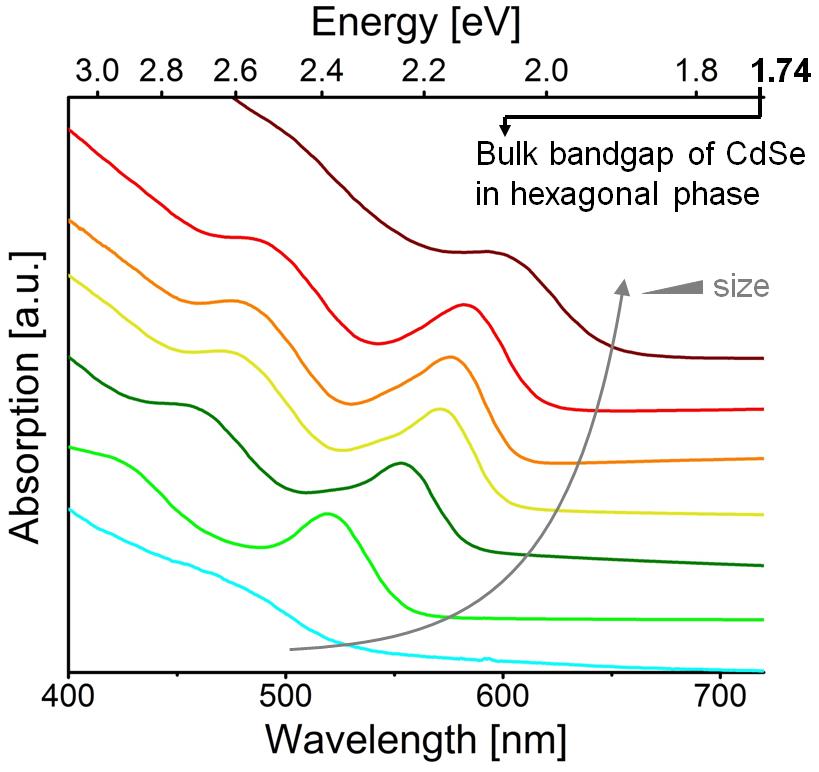
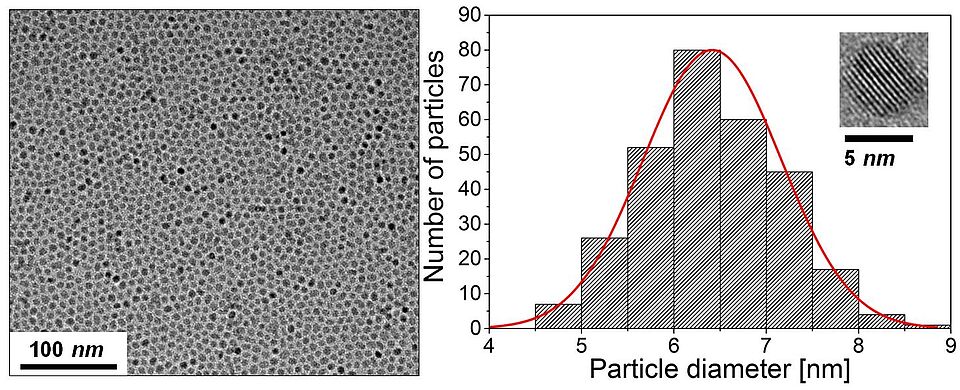
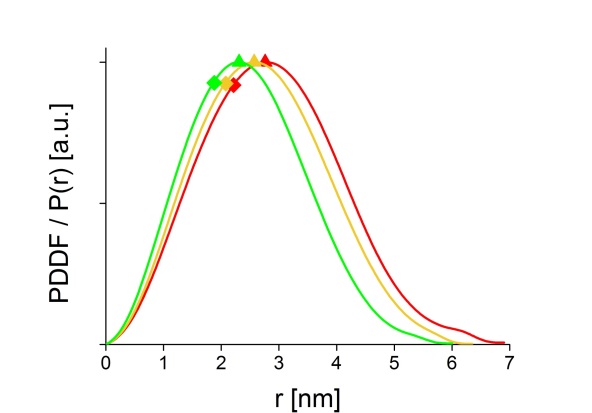
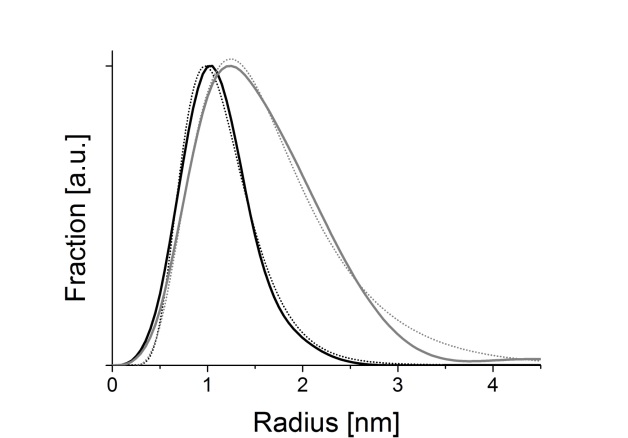
Fig. 2: Application of central information from applied methods: Absorption spectroscopy (top left), TEM (top right), SAXS as pair distance function (bottom left) and as size distribution (bottom right).
The central information from the methods can be applied against each other. Here the trend of SAXS as a volume-dependent method becomes clear, which can be adjusted however by the correct weighting. The resulting results correspond well with the TEM-based literature [2,3]. If the previous trend is confirmed by further statistical measurements, TEM can be routinely replaced by SAXS.
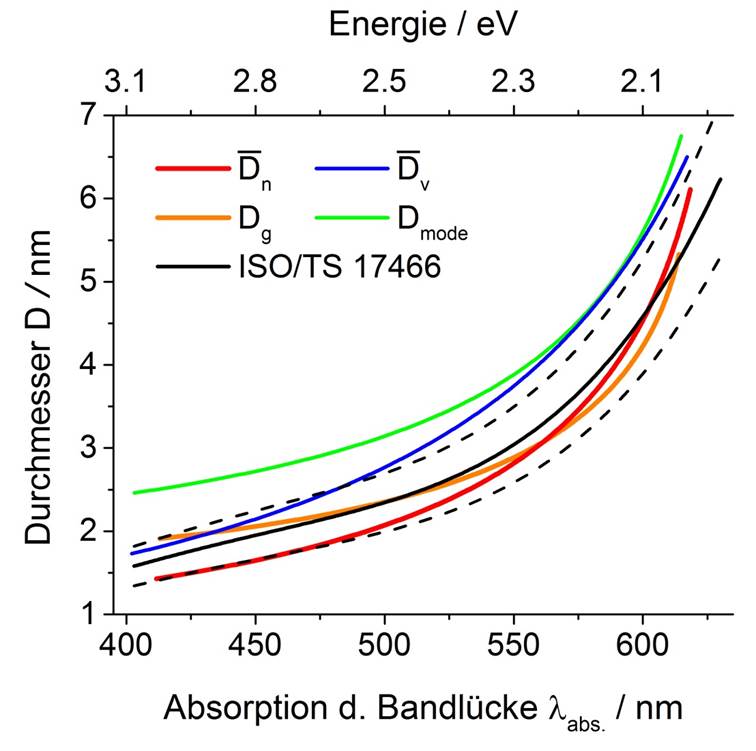
Fig. 3: Correlation of some measurement data from SAXS and TEM against the corresponding absorption maxima [4].
Publications:
[1] Peng Z A and Peng X J 2001 Am. Chem. Soc. 123 183
[2] Yu W W, Qu L, Guo W and Peng X 2003 Chem. Mater. 15 2854-2860
[3] Jasieniak J, Smith L, van Embden J, Mulvaney P and Califano M 2009 J. Phys. Chem. C 113 (45) 19468–19474
[4] Porsiel J.C., Temel B., Schirmacher A., Buhr E., Garnweitner G. Nano Res. 2019